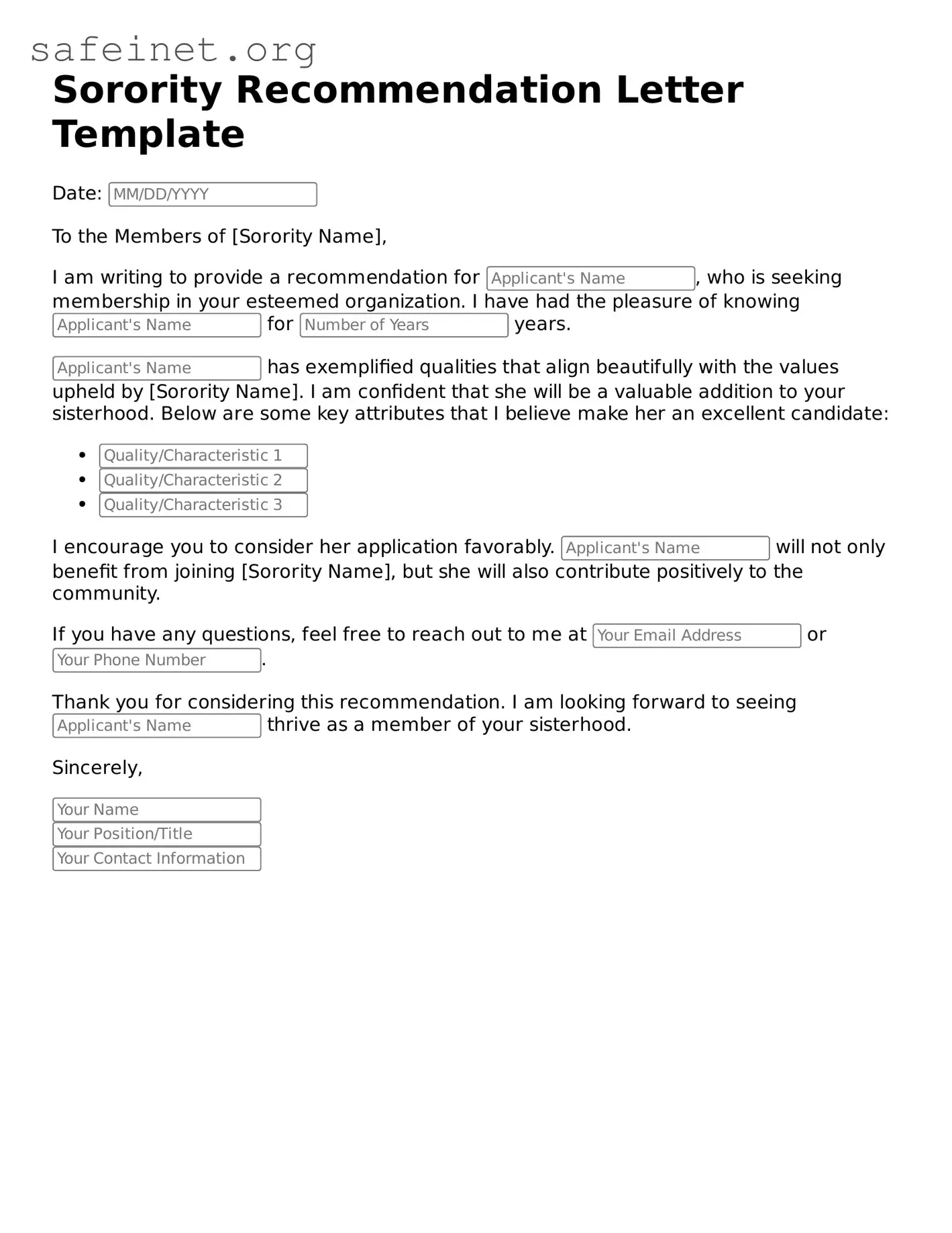What is a Sorority Recommendation Letter?
A Sorority Recommendation Letter is a document written by a member of a sorority, endorsing a potential new member. This letter highlights the individual's strengths, character, and suitability for membership in the sorority. It serves as a personal endorsement during the recruitment process.
Who should write a Recommendation Letter?
Typically, a current or alumna member of the sorority should write the Recommendation Letter. This person should know the potential new member well enough to provide insights into her personality, achievements, and alignment with the sorority's values.
Why is a Recommendation Letter important?
A Recommendation Letter can significantly influence a potential member's recruitment experience. It provides a personalized perspective on the candidate, allowing the sorority's selection committee to better understand her qualifications and character. Having a letter can enhance a candidate's chances of receiving a bid.
When should the Recommendation Letter be submitted?
Each sorority has its own timeline for submitting Recommendation Letters. It is best to check the specific deadlines set by the sorority or the campus recruitment schedule. Typically, letters should be submitted well in advance of the recruitment events to ensure they are considered.
What information should be included in the Recommendation Letter?
The Recommendation Letter should include the writer's relationship with the candidate, specific examples of the candidate's accomplishments, her involvement in extracurricular activities, and any personal anecdotes that demonstrate her character. It should also reflect the values and standards of the sorority.
Can a potential new member request a Recommendation Letter?
Yes, potential new members are encouraged to reach out to sorority members or alumnae to request Recommendation Letters. This proactive approach demonstrates interest and initiative, which sororities often appreciate. It is important to approach the request respectfully and well in advance of deadlines.
Is there a specific format for the Recommendation Letter?
While there is no universal format, many sororities provide a template or guidelines for the Recommendation Letter. The letter should be typed, clearly written, and professionally formatted. Follow any specific requirements outlined by the sorority to ensure compliance.
Will multiple Recommendation Letters benefit a candidate?
Having multiple Recommendation Letters can be advantageous, as it provides different perspectives on the candidate. However, it is crucial to ensure that each letter adds unique insights rather than repeating the same information. Quality is often more important than quantity.
What happens if a candidate does not have a Recommendation Letter?
While some sororities may still consider candidates without Recommendation Letters, having one can provide a significant advantage. Candidates without letters may face challenges during recruitment. Each sorority’s policies differ, so it is essential to understand the particular sorority’s stance on Recommendation Letters.
Can a Recommendation Letter be rescinded?
A Recommendation Letter can be rescinded by the writer under certain circumstances, such as if they feel they can no longer endorse the candidate. This action should be taken seriously, as it can impact the candidate’s recruitment experience. Communication between the writer and the candidate is vital in these situations.
